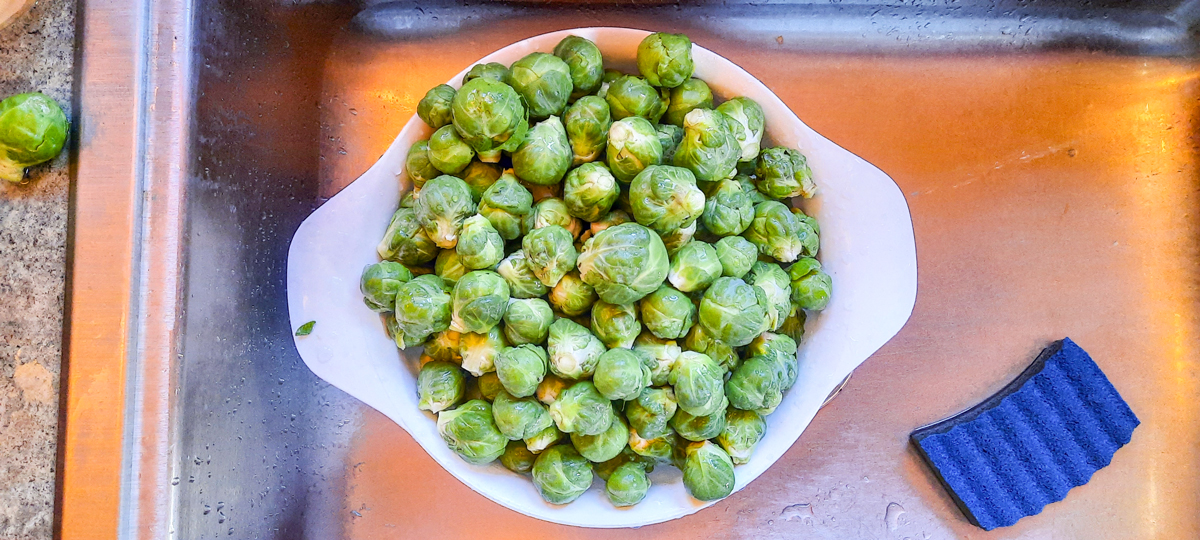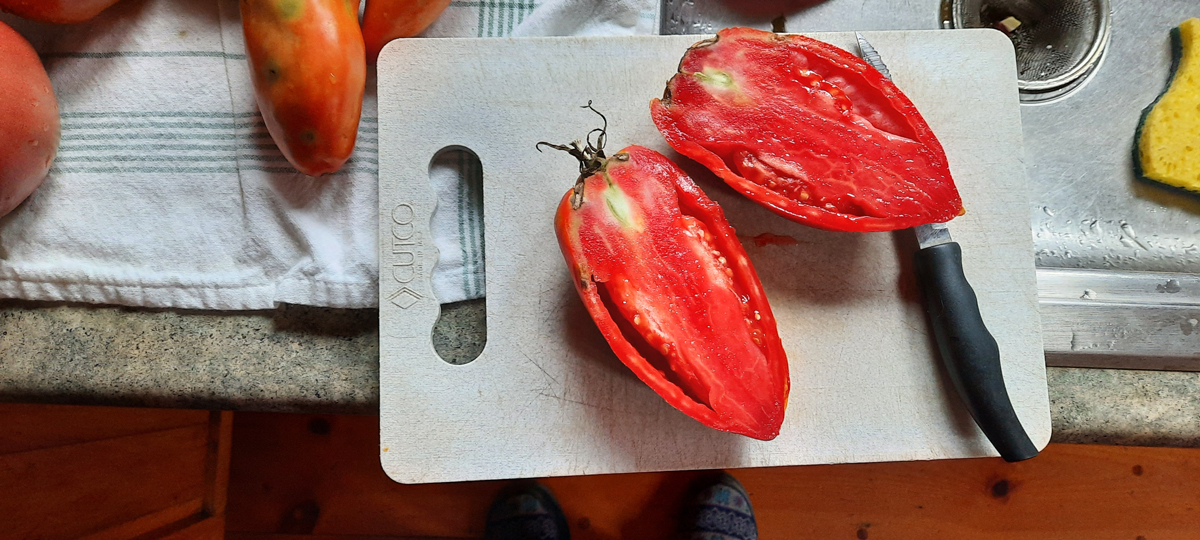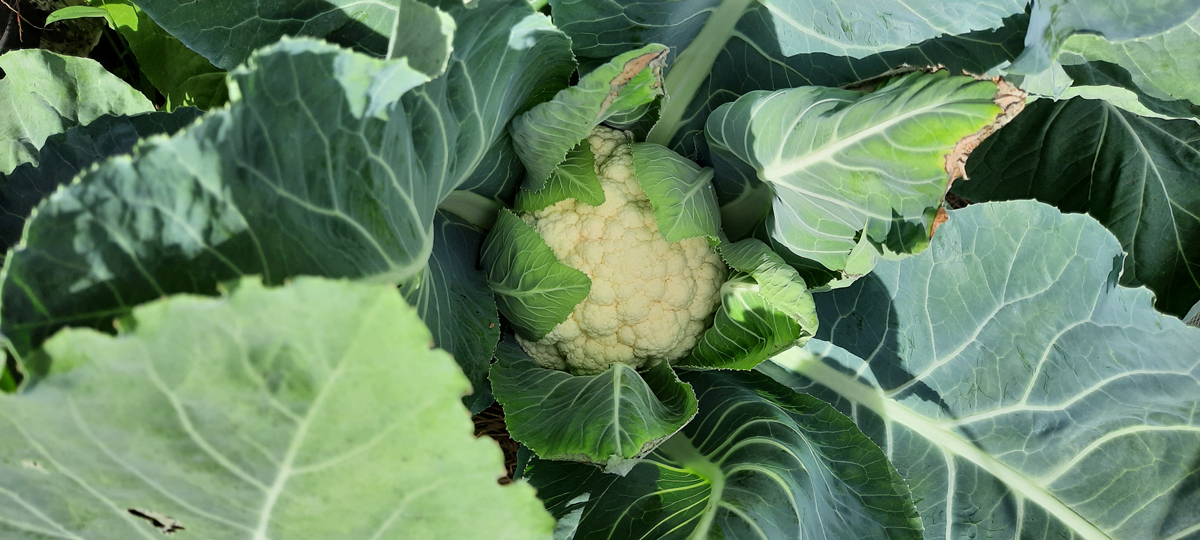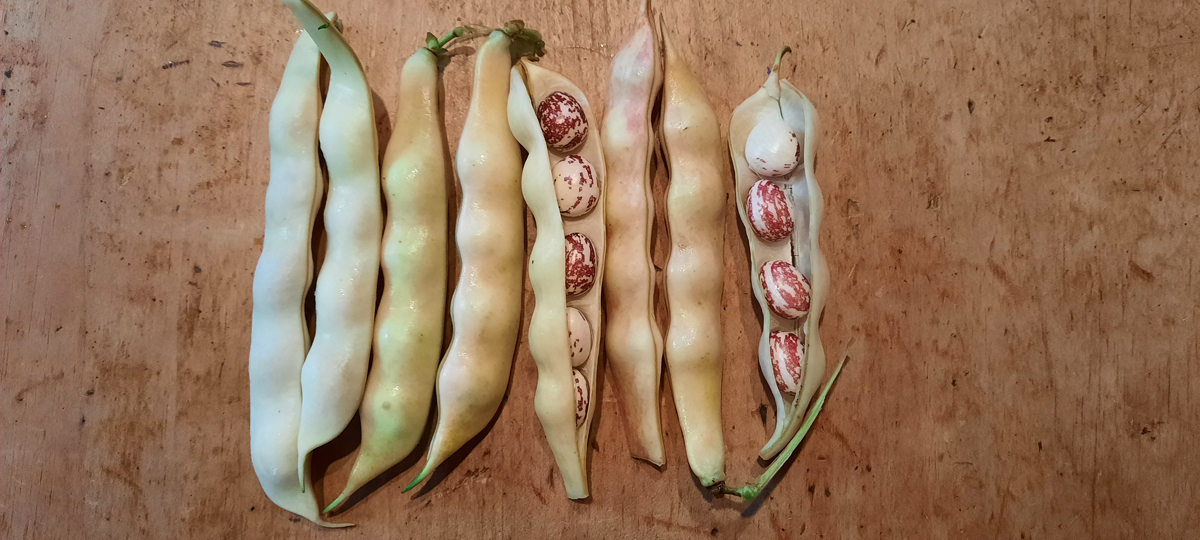2024: Year in Review
maria All Articles, Growing in a Box, Outdoor Gardening December, gardening by the month, Indoor Garden, outdoor gardening 0

I wasn’t going to plant Brussels as no one really ate them. However, a request came late after I ordered a garden full of seeds. I had to go looking for Mart-L and find a vendor who still carried them. They were pricy, additionally, so was the shipping. The cost was over 20 bucks for 24 seeds. Luckily all but one germinated. The cost came out to be about a dollar a seed. After three years of experimenting the best variety to plant in NH, in our soil, is Mart-L. Look for varieties that tout 1 1/2″ sprouts.

We constructed three giant tripods with a crossbar and grew the vines (indeterminate) up a nylon string. The Dr. Wytch’s did great as usual. New to this year was the Hogs Heart Paste and Bonny Best. Bonny being nicely shaped and somewhat abundant and the hogs less susceptible to blossom end rot. Yellow brandywine did well as red did ok. Disappointing was the purple cherokee I heard so much about. There was a good harvest but there was a lot of cracking

PLanted Robber variety and did well in both MA and NH. Initial planting don’t in spring and used shade cloth throughout hot days. After first harvest I pulled the plants and replanted remaining plants left in cells/small pots in shade. Next year the plan should be to plant from the cells every two weeks, unless I want to freeze or pickle and need a large harvest.

The experiment was to see how many dried beans we could harvest and store. The vines grew over ten feet before flowering but eventually produced two and a half quarts of dried beans on about 6-7 plants. Next year I plan to double the row size for the bean.
We grew three varieties: Minnesota midget – did well, Kajari (an Indian melon with orange flesh)- not planting again, and watermelon. Minnesota averaged about 8 inches round, though the varmints chewed a few. The watermelon did well with several small and one much larger than a basketball. The problem is that when fully ripe we’re well into September/October and no one has a carving for watermelon. I would try again if I had the space, and start the plants indoors then transfer to hoop house before setting in the garden. Melons and cukes ideally should be planted into the ground no earlier than June here in NH.
Everything else did OK. I could have done better on the beets, which were planted in succession of the potato row, if I had been more attentive to trapping out the voles. We could use a couple of cats or try harder to attract birds of prey.
There are still frozen Brussels sprouts to be picked in the garden, frozen, but good to eat. There were a few small broccoli florets, and this will inspire me to grow a second planting next year. The frozen celery can still be used. The beets could have been used if it weren’t for the voles and mice. I set the traps too late but got the nasty beasts anyway and left them on the “buffet” for the hawks and owls. Any exposed soil should be covered by now, or before the first snow.
Everything you have frozen or canned should be ready for your Christmas dinner.
We need to try harder on the potatoes, onions and carrots for next year. I’ve been scrutinizing the seed catalogs and soon I’ll be on reddit for advice.
Potatoes have already been ordered from Fedco: Upstate Abundance Early Season Potato. These are small golfball-sized potatoes that are to be grown in containers. We lost half our crop to rodents. This is one workaround.
Onions that were purchased at the nursery, Red Zeplin, have been hard to obtain. It seems they are almost exclusively sold to commercial growers as you need to buy seed in bulk. We had a white onion, but the name escaped me.
Carrots are still a bit elusive, I need to pay closer attention to the variety and hopefully will find one that grows well in my soil.
If the grow box is not in use, start cleaning it up. This is the time to start planning your seedlings for the grow box. If you don’t have a grow box, a shelving unit may be used in a spare room or a controlled environment. If you don’t have a spare room, I highly recommend acquiring a grow box.
Find out more about grow boxes.
Replace the filter. Check the fan and lights and adjust the heights and placement. The inside of the box and all the containers can be sterilized by spraying with hydrogen peroxide or wiping down with alcohol. A small mushroom farm should be used to add CO2 to the box for better growth.
I use plastic pots in aluminum trays (the kind you get at the supermarket for casseroles). These should be sized so there is good air circulation around and through the plants and shelves if there are shelves.
Use a good potting mix (Fox Farms) and top off with a seed starter mix. Use plastic containers of any size. I use a 6-inch round plastic pot for greens such as Swiss chard and lettuce. Use 6 cell containers for transplants. It’s still too early for planting transplants but there will need to be room in the grow box by February and March.
Check through the seeds and see what was saved and what needs to be ordered. I always try to order heirloom seeds, with the exception of Brussels sprouts which need a two-year growth cycle to produce seeds. If I had a larger hoop house I would grow a couple of Brussels just for the purpose of growing Brussels for seeds.
Consider starting these seeds for the grow box in December: